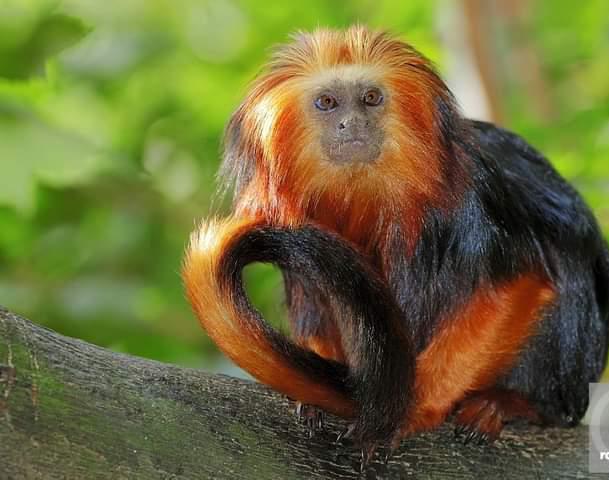
African Monkeys are the most colourful mammals, and the brightest and one of the most eye-catching monkeys is a tiny primate (500-700 grams). endemic to Brazil — the golden-headed lion tamarin.
This beautiful monkey is growing shockingly less in population, it is classified as ‘endangered’.
Africa’s snow monkeys.
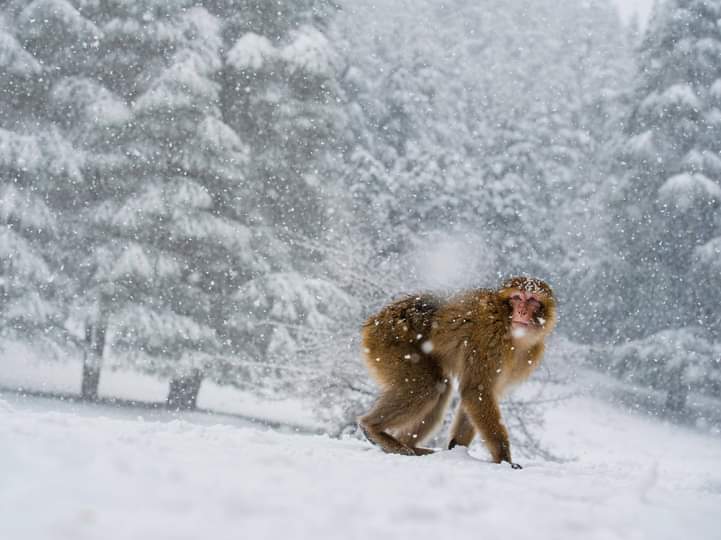
Can you believe Africa has snow monkeys, and yes, there is real snow! This is a small area — the Atlas mountains, on the northern edge of the Sahara desert there is deep snow. If you see photos you will swear these are photos of the European Alps… But, they are African mountains, and in this unbelievably beautiful landscape is the home to the only African monkeys species with no tail — the Barbary macaque.
Gelada African Monkeys
The gelada, sometimes called the bleeding-heart monkey or the gelada “baboon”, is a species of Old World monkey found only in the Ethiopian Highlands, with large populations in the Semien Mountains. Geladas are actually not baboons but the only living members of the genus Theropithecus.
Every evening, Gelada African monkeys drop down onto ledges on cliffs and their family unit usually huddle together to keep warm. By getting off the plains, they escape leopards and spotted hyenas preying on them at night.
Most species of baboon are not at all fussy what they eat and will just about eat anything — insects, lizards, roots and fruit. Some will even hunt, and eat baby antelope, but one species — which was once considered a true baboon, but now is found in its own genus, is a vegetarian
African Vervet Monkeys Facts
African vervet monkeys monkeys do not like to be alone and live in troops — as large as about 50 individuals. They are not aggressive African monkeys and even if the alpha male is about 6 kg (13 pounds) he may put on a show to intimidate you but if you get too close he will run away. Like any wild animal that is cornered and not able to escape, only then might he bite only because he is fearful and needs to protect himself and his family.
Monkeys can see a colour, and that is obvious because they are so colourful and use colours for display — like the male vervet monkey. This monkey has a powder-blue scrotum, beautiful and flashy enough to attract the ladies, but mainly to keep rivals away from his troop. This lovely colour fades as
as he loses social rank.
Mandrill Monkey
The biggest African monkey in the world is the Mandrill, but it is closely followed by its closest relation: The shy Drill monkey that lives in West Africa. Their more colourful cousin, the Mandrill is the one most seen in zoos. Mandrill monkey populations are growing less as they are often hunted for bushmeat. These rare African monkeys does not attack humans. It is a shy monkey and prefers to avoid people. There are only a few thousand of them left, and this wonderful, huge African monkey is classified as endangered.
One of the most colourful African monkeys. Mandrill males are dominant if their colours are bright, as soon as they fade, the females begin looking for a new male to breed with. The dominant male lords over a troop of about 30.
20 of them are usually females he can breed with. In this troop, there are often 1 or two males, but they are younger, slimmer in build (not as powerful) and their colours are not as bright as the dominant male.
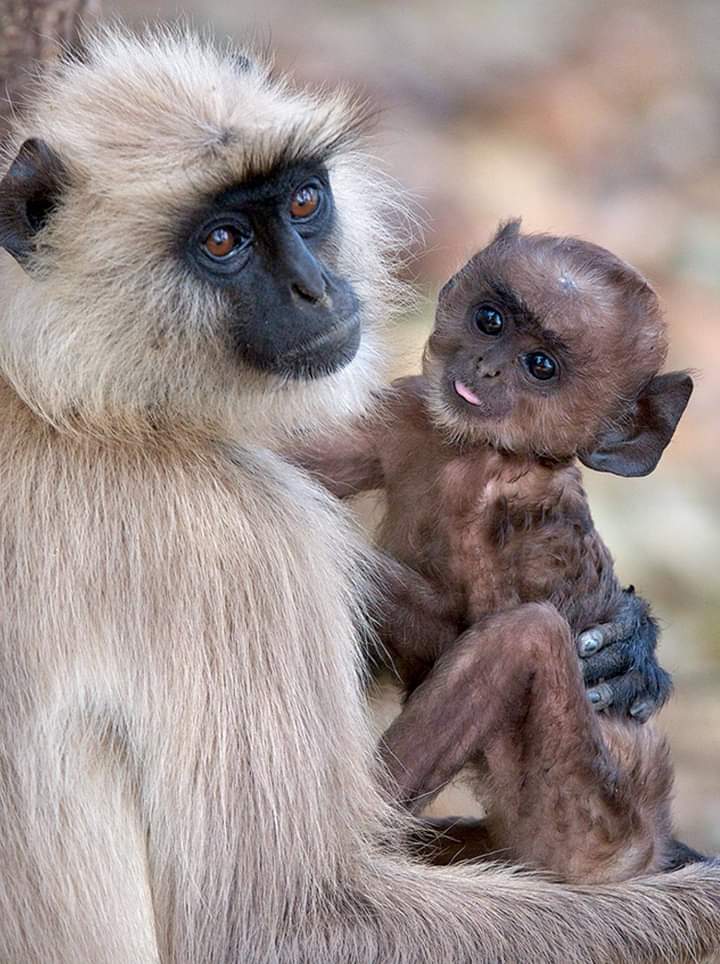
You know that monkey that is named after a Hindu god, and is sacred? People feed them and tolerate them raiding farms and homes. Well, that monkey is Hanuman langur, and is most studied, and most seen in and around the city of Jodhpur, India. The bond between the mother monkey is very strong, and if it happens, for some reason, the infant dies, she will carry the dead infant around for weeks.
The most intelligent monkey in the world is a New World monkey — the capuchin.These clever monkeys are native to the tropical forests in Central America and South America as far south as northern Argentina.
These monkeys are also better known to some as the ‘organ grinder’ monkeys.
- Using a rock to crack open hard nuts. What we do not see is that little nut is set in a depression of the other rock’s surface and it uses the other rock like an anvil and leans on its tail for balance.
The Vibrant Tantalus African Monkeys
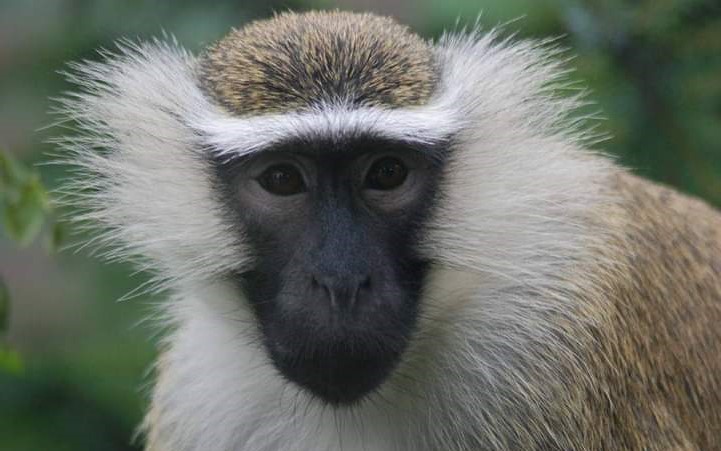
There are several kinds of monkeys around the world and each is differentiated from others with its unique characteristics. The tantalus monkey is an old world species found in many African countries — Ghana, Nigeria, Kenya, Central Africa, Mali and a host of others. They are small monkeys with a black face that almost make the eyes invisible since they are also black.
They prefer woodland to grassland vegetation. They live in large troops of about 30-50 individuals of many males, several females and their offsprings. Some members of the troop can be aggressive especially when they want to defend their territory.
The females mature to reproductive age at the age of about 5 years. According to the International Union for the Conservation of Nature (IUCN), they are classified as ‘least concern’.
Patas – The Dancing African Monkeys
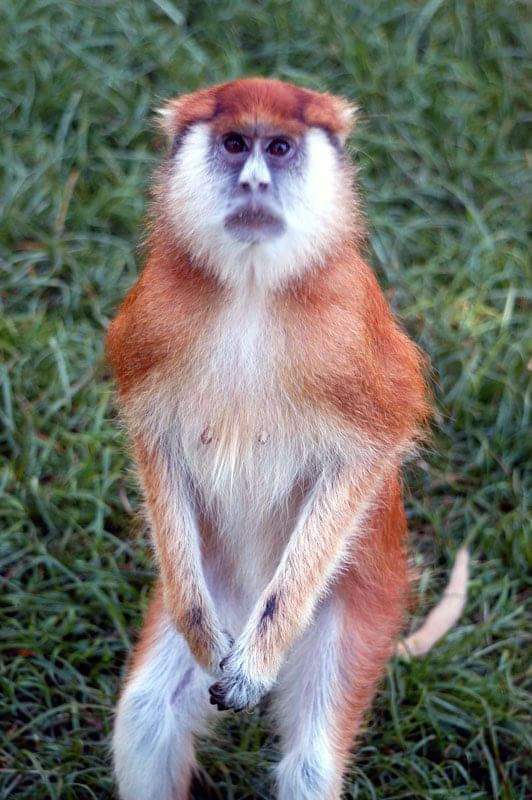
The Patas African monkeys which has other names like wadi or hussar monkey, is an old world species with a habitat range from West to Central to East Africa. They are, however, much more in population in West Africa. When excited, they jump around, hence, nicknamed “dancing African monkeys”.
The limbs are morphologically long and ably suited for terrestrial movement and speed. They are the world’s fastest primate with a speed of about 54m/h. They run with their fingers (not palms) and may be mistaken for a cheetah in motion.
They are sexually dimorphic — males are bigger with brighter colours than females. Females mature sexually at 3 years while males mature at 4. Gestation period is about 23-24 weeks and babies are nursed for about 3-5 months before they start an independent life. Their life pan is about 15-20 years in the wild and about 21-24 years in captivity.
- They are “near threatened” according to IUCN, 2020.
Pongo
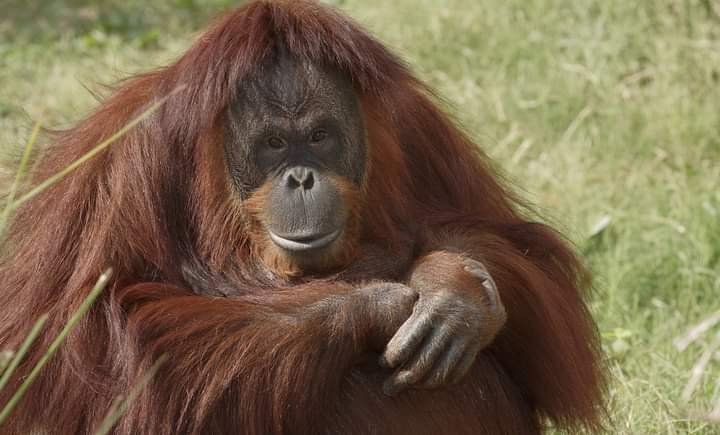
The sole (only) member of the ‘pongo’ genus is critically endangered.
This is the largest and heaviest ape living in Asia’s shrinking forests — the highly intelligent orangu-tan.

